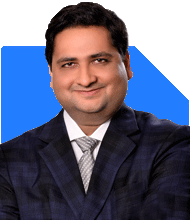Ramalingam Kalirajan |9848 Answers |Ask -Follow
Mutual Funds, Financial Planning Expert - Answered on Apr 30, 2024
He has an MBA in finance from the University of Madras and is a certified financial planner.
He is the director and chief financial planner at Holistic Investment, a Chennai-based firm that offers financial planning and wealth management advice.... more

Hi Kirtan, I already have SIP in PPFAS Flexicap, Axis Small Cap, CR Flexicap, Kotak Emerging, SBI Magnum Midcap. Now I have 3-4 lakhs which I plan to invest in an equity fund. Can I invest in Nippon India Multicap Fund via STP from a debt fund ? If yes, which debt fund will be good for STP over a period of 2-3 years. Is this new investment a good idea or I should invest in my exisiting MF's. Please advise.
For the debt fund, consider options like Liquid Funds or Ultra Short Duration Funds, which offer stability and liquidity while generating modest returns. Popular choices include SBI Liquid Fund or HDFC Ultra Short Term Fund.
Before proceeding, evaluate if adding another equity fund aligns with your overall investment strategy and risk tolerance. Also, assess if you have any gaps in your existing portfolio that Nippon India Multicap Fund can fill.
Ultimately, the decision depends on your financial goals, risk appetite, and investment horizon. If you're comfortable with the strategy and it complements your existing portfolio, investing via STP into Nippon India Multicap Fund can be a prudent move. However, if you're uncertain, it's wise to consult with a Certified Financial Planner for personalized advice tailored to your specific circumstances.
You may like to see similar questions and answers below
Omkeshwar Singh | Answer |Ask -Follow
Head, Rank MF - Answered on Dec 16, 2020
Hardik Parikh | Answer |Ask -Follow
Tax, Mutual Fund Expert - Answered on Apr 23, 2023
Ramalingam Kalirajan |9848 Answers |Ask -Follow
Mutual Funds, Financial Planning Expert - Answered on Jul 20, 2024
Ramalingam Kalirajan |9848 Answers |Ask -Follow
Mutual Funds, Financial Planning Expert - Answered on Jan 20, 2025
Ramalingam Kalirajan |9848 Answers |Ask -Follow
Mutual Funds, Financial Planning Expert - Answered on Jan 20, 2025
T S Khurana |500 Answers |Ask -Follow
Tax Expert - Answered on Jul 25, 2025
T S Khurana |500 Answers |Ask -Follow
Tax Expert - Answered on Jul 25, 2025
T S Khurana |500 Answers |Ask -Follow
Tax Expert - Answered on Jul 25, 2025
Nayagam P P |9419 Answers |Ask -Follow
Career Counsellor - Answered on Jul 25, 2025
T S Khurana |500 Answers |Ask -Follow
Tax Expert - Answered on Jul 25, 2025
Nayagam P P |9419 Answers |Ask -Follow
Career Counsellor - Answered on Jul 25, 2025

Follow RediffGURUS to Know More on 'Careers | Money | Health | Relationships'.
Nayagam P P |9419 Answers |Ask -Follow
Career Counsellor - Answered on Jul 25, 2025
Nayagam P P |9419 Answers |Ask -Follow
Career Counsellor - Answered on Jul 25, 2025
Nayagam P P |9419 Answers |Ask -Follow
Career Counsellor - Answered on Jul 25, 2025
Radheshyam Zanwar |5801 Answers |Ask -Follow
MHT-CET, IIT-JEE, NEET-UG Expert - Answered on Jul 25, 2025
























